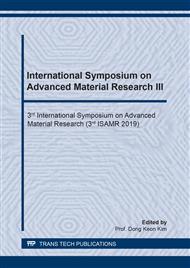p.3
p.10
p.15
p.20
p.27
p.33
p.39
p.47
p.53
The Development of Accelerated Test Method for Internal Sulfate Attack by Delayed Ettringite Formation
Abstract:
Delayed Ettringite Formation (DEF) is an internal sulfate attack caused by heat-induced decomposition and/or prevention of normal ettringite formed during the initial hydration of cement at elevated temperature (above about 70°C) and its re-crystallization in the hardened matrix. This reaction is a physico-chemical phenomenon inducing an expansion of the cement paste that could lead to cracking of cementitious matrix. These cracks result in a decrease in the mechanical performances and durability parameters of the material. However, the internal sulfate attack is characterized by a very slow reaction kinetics and therefore it is difficult to study it in laboratories. This research developed an accelerated method focused on mortar specimens; it is based on electrochemical techniques in order to speed the leaching of alkalis that could be accelerated the DEF.
Info:
Periodical:
Pages:
27-32
Citation:
Online since:
April 2020
Authors:
Keywords:
Price:
Сopyright:
© 2020 Trans Tech Publications Ltd. All Rights Reserved
Share:
Citation:


